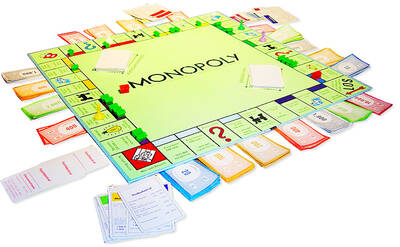Three Lilies, by Cy DeCosse, is a photograph of a single stem with three blooms, each beguilingly detailed and luminous on the paper. On the leaves below, there is a depth of grays and blacks difficult to achieve with any other photographic process.
It’s one of about 60 platinum-palladium prints that go on display Thursday at Taiwan Photo, the only fair in Taiwan for fine art photography.
This year, Taiwan Photo is showcasing a range of historic processing methods to mark the 175th anniversary of the invention of photography.

Photo Courtesy of Taiwan Photo Fair Committee
Its marquee feature is the platinum-palladium print, which is highly prized by collectors for its wide tonal range, soft look and durability. One print can last over 500 years, says event organizer Edward Chiu (邱奕堅), also the art director of Taipei-based 1839 Contemporary Gallery (1839當代藝廊).
Dating back to the 19th century, platinum-palladium processing is expensive and uncommon in the industry today.
DeCosse, from the US, and Japanese American Kenro Izu are two critically acclaimed photographers who continue to use the method, and at Taiwan Photo they are offering prints from the Flowers and Still Life series, respectively.

Photo Courtesy of Taiwan Photo Fair Committee
Other historic prints include the daguerreotype, the ambrotype, the dry plate and the albumen print, brought in from galleries and photographers around the world.
The fair will also give photography lovers a chance to see contemporary pieces by global heavyweights.
This year, photographers include Tom Chambers, recipient of the Worldwide Photography Gala Awards; conceptual underwater photographer Elena Kalis from Moscow; Brigitte Carnochan, famous for poetic interpretations of flowers and nudes; and Daniela Edburg, who crochets and knits props for her surreal still lifes.

Photo Courtesy of Taiwan Photo Fair Committee
Gao Yuan (高媛), a world-leading photographer from Greater Kaohsiung, will be at Taiwan Photo with Woman with Building, a nude woman who reclines on a blue blanket with her back against the camera. Her face, turned slightly, is exquisite and disaffected, as if she has caught the viewer mid-stare. The background is a hazy industrial landscape expertly balanced with her body so that it appears to be a natural extension, and so her face becomes an oblique comment on what the onlooker has done to the earth.
First held in 2011, Taiwan Photo is Taiwan’s only fair that specializes in museum-quality prints for private collectors. The prints are run in limited edition and typically retail between NT$20,000 to NT$300,000.

With one week left until election day, the drama is high in the race for the Chinese Nationalist Party (KMT) chair. The race is still potentially wide open between the three frontrunners. The most accurate poll is done by Apollo Survey & Research Co (艾普羅民調公司), which was conducted a week and a half ago with two-thirds of the respondents party members, who are the only ones eligible to vote. For details on the candidates, check the Oct. 4 edition of this column, “A look at the KMT chair candidates” on page 12. The popular frontrunner was 56-year-old Cheng Li-wun (鄭麗文)

“How China Threatens to Force Taiwan Into a Total Blackout” screamed a Wall Street Journal (WSJ) headline last week, yet another of the endless clickbait examples of the energy threat via blockade that doesn’t exist. Since the headline is recycled, I will recycle the rebuttal: once industrial power demand collapses (there’s a blockade so trade is gone, remember?) “a handful of shops and factories could run for months on coal and renewables, as Ko Yun-ling (柯昀伶) and Chao Chia-wei (趙家緯) pointed out in a piece at Taiwan Insight earlier this year.” Sadly, the existence of these facts will not stop the

Oct. 13 to Oct. 19 When ordered to resign from her teaching position in June 1928 due to her husband’s anti-colonial activities, Lin Shih-hao (林氏好) refused to back down. The next day, she still showed up at Tainan Second Preschool, where she was warned that she would be fired if she didn’t comply. Lin continued to ignore the orders and was eventually let go without severance — even losing her pay for that month. Rather than despairing, she found a non-government job and even joined her husband Lu Ping-ting’s (盧丙丁) non-violent resistance and labor rights movements. When the government’s 1931 crackdown

The first Monopoly set I ever owned was the one everyone had — the classic edition with Mr Monopoly on the box. I bought it as a souvenir on holiday in my 30s. Twenty-five years later, I’ve got thousands of boxes stacked away in a warehouse, four Guinness World Records and have made several TV appearances. When Guinness visited my warehouse last year, they spent a whole day counting my collection. By the end, they confirmed I had 4,379 different sets. That was the fourth time I’d broken the record. There are many variants of Monopoly, and countries and businesses are constantly